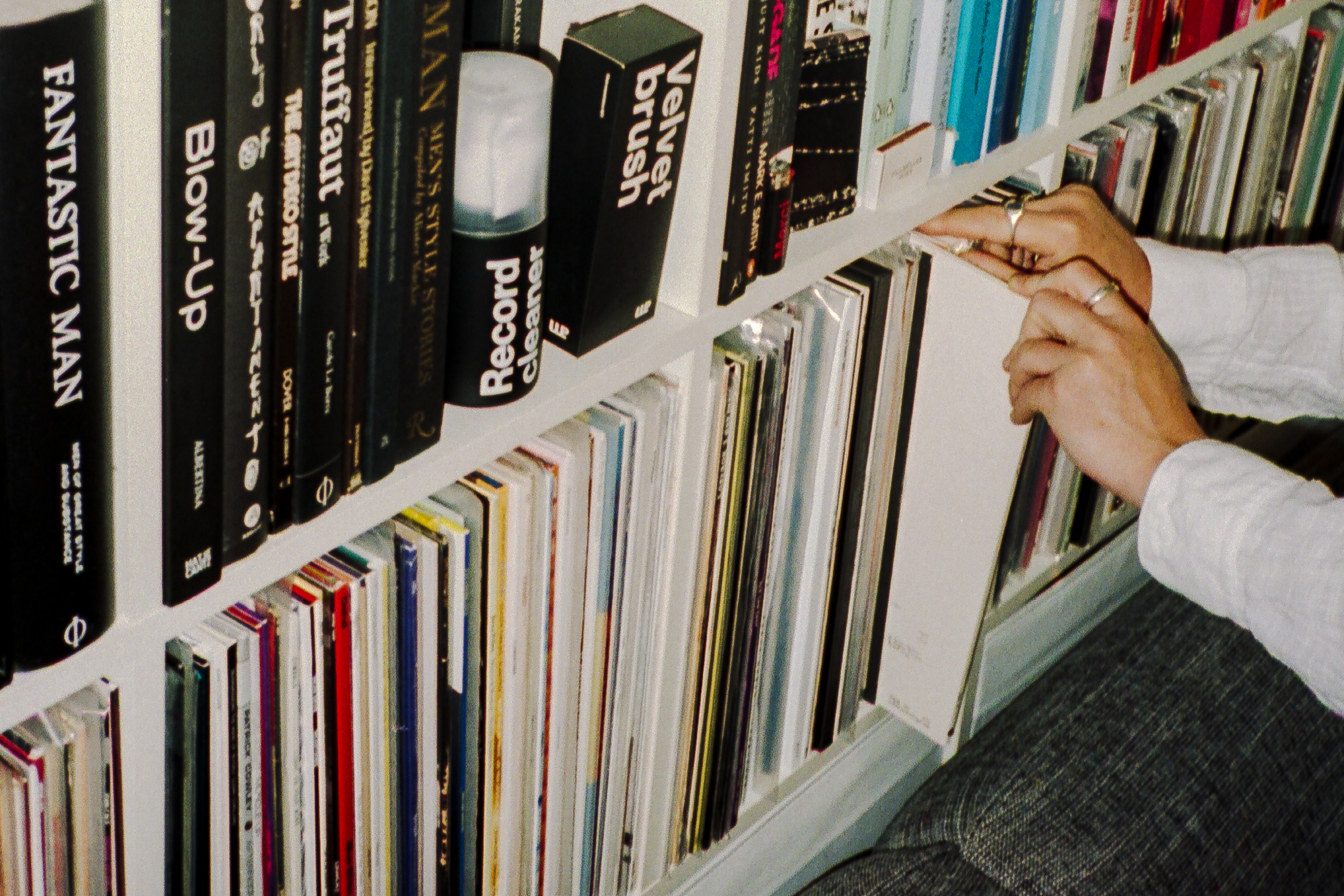Back to the Digital Future: An AM Love Letter to the Compact Disc
We love CDs and we make no apologies for that fact. Read on to hear why we’re ever-so slightly obsessed with the shiny physical music format.

CDs are in an interesting place right now. As you may already have caught wind of somewhere on the sound-centric parts of the internet, a lot of people, (bigger tech media included), are wondering if we’re on the verge of a full-blown CD revival.
There’s CD discussion on social media; a swell of murmurings on message boards; and with-it artists like Dev Hynes of Blood Orange fame leveraging the accessibility offered by the budget-friendly format to provide their fans with innovative experiential merchandise like limited edition live recordings of the show that said fans went to see. Yes indeed, as the dust begins to settle after the resounding explosion of the vinyl revival, the next rediscovery in the ongoing physical music revolution—a movement favoring immersion and tactility over speed and convenience—just might be the humble, yet powerful CD.
But…CDs?
At this point in time, the prospect of a CD revival leads to certain questions posed by certain skeptics, primarily those of the die-hard vinyl persuasion. Questions like: aren’t CDs flimsy, disposable and wack? A washed-up medium now relegated to the joyless back rows of Walmart’s music section and similar sonic graveyards?
While some of that may be true to some degree, CDs are definitely not wack. We get why you would think that, though. Up until fairly recently, very few people gave CDs the time of day. In 2018, it got so bad that certain tech media were writing semi-condescending eulogies for the music-carrying disc. Well past its prime—and possibly even its sell-by date— the format seemed destined for oblivion. But as the saying goes, that was then and this is now. We love CDs. And we think they might be primed for a big comeback, owing to a range of crucial reasons.
They sound amazing
First off, there’s also the all-important superior sound quality to consider. Unbeknownst to many outside audiophile circles, CDs offer incredibly clear sound. When it was first introduced in 1979, it changed the audio game, ushering in a new era in the high-fidelity listening experience, liberated from the pops, clicks, and hissing that came with older formats. This will always be a heavily contested point of contention—and hey, it goes without saying that we love vinyl—but many audiophiles think that the CD listening experience is unrivaled in its clear and detailed excellence.

They’re much cheaper than vinyl
It’s hard to provide a direct price comparison between CDs and vinyl. There are just too many variables to consider. However, to give you a general idea, the cost of releasing your music on CD is roughly 4 times lower than pressing it onto vinyl. As a result, the impeccable sound quality. affordability and greater acessibility, make the CD an ideal physical medium for young producers, musicians and other creators with limited means/access to overburdened pressing plants. 
CD design history is a delectable feast for the eyes
Way back in the 80s, the compact disc was marketed as a newfangled medium illuminating an LED-lined path towards the future. Where the communication of vinyl was very much a product of its day, CD ads contained a sleek, utopian vibe that’s much more spacey, optimistic and future-facing. It hints at bold, new vistas emerging at the edge of everything. Get Pinteresting and feed your visual apparatus with time-honored, retro-futuristic eye candy.

AM has always been into CDs. When the digital music revolution first began to gain momentum, we rode the crest of the soundwave, developing a series of quality cleaners and care products. We tend to think of CDs as a dormant desire that’s now been reawakened (flame emoji). And we’re even considering getting a Beosound 9000 CD player for the office. Watch this space.
In the market for a CD player? Here’s what to look out for:
Sound: Sound quality is non-negotiable. You don't want to be stuck with a player that makes your music sound like it's coming from a Peppa Pig toy. Look for a player with a high-quality DAC (Digital to Analogue Converter) that can convert those digital bits into analog magic.
Versatility: Next up, make sure your player can handle all the CDs you have in your collection. No one wants to be stuck with a player that can't handle a CD-R or CD-RW. While we're on the topic of compatibility, consider whether you want a player with Bluetooth or USB connectivity, so you can stream your music from other devices.
Durability: When it comes to build quality, you want a player that can take a beating. You don't want to be replacing your player every time you drop it. And let's not forget about features; some players come with repeat and shuffle modes, multiple disc capacity, and digital output. Decide which features are important to you.
Price: Don't skimp on the brand or price. Look for a brand with a good reputation for producing quality players, and don't be afraid to spend a little extra dough to get what you want.
Design: Lastly, form factor is pretty crucial. As a design-driven brand, we can’t in good conscience recommend a less than beautiful player. As our friend Trevor Jackson puts it: ‘There’s more to music than the music itself.’ Also, if it looks good, you’re less likely to get rid of it, which is ultimately better for the environment.


